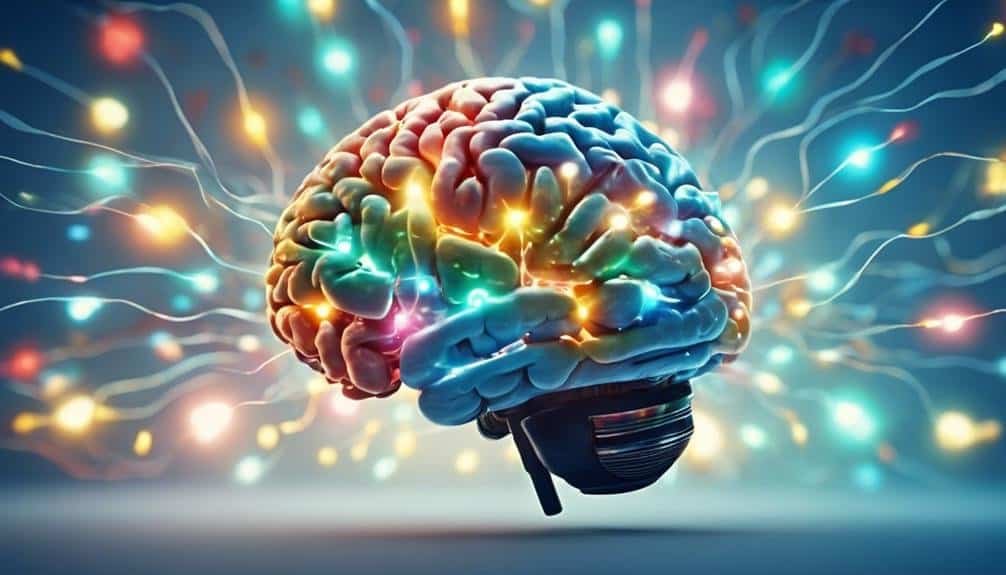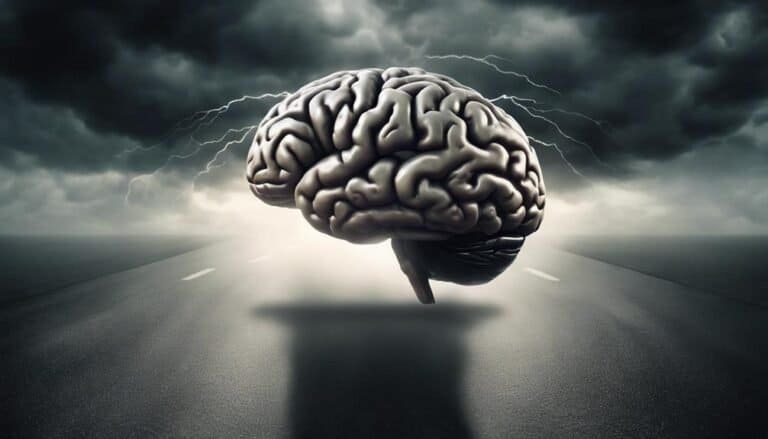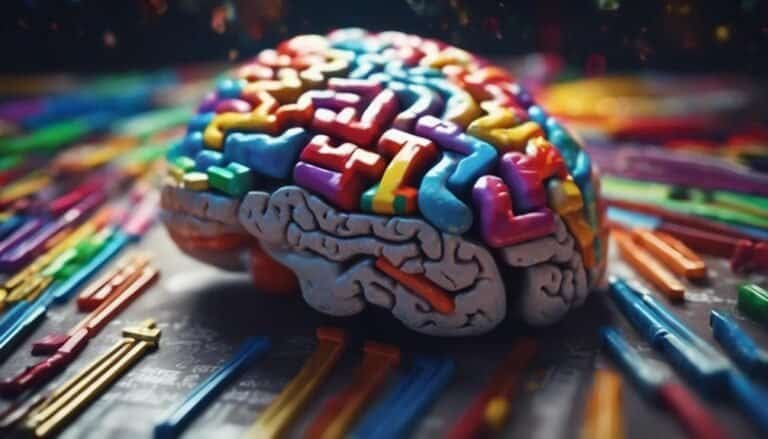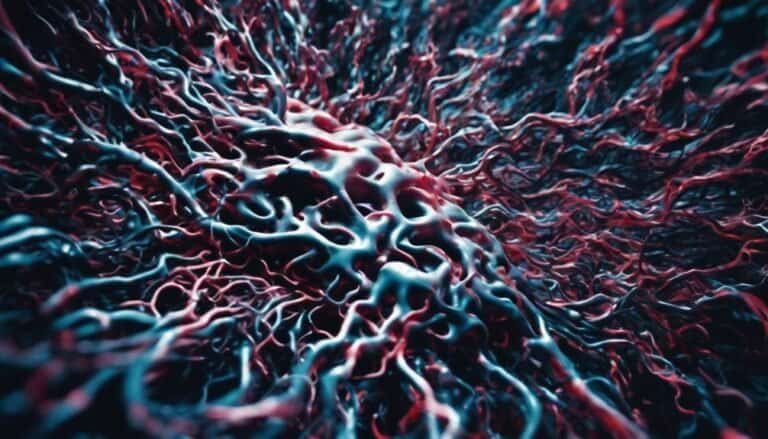Brain and the Science of Happiness
Imagine your brain as a complex web of connections, constantly working behind the scenes to regulate your emotions and well-being.
Have you ever wondered how certain activities or experiences can trigger feelings of joy and contentment? Understanding the intricate relationship between the brain and happiness can shed light on ways to enhance your overall quality of life.
As you start to explore the fascinating world of neuroscience and positive psychology, you'll uncover surprising insights that could potentially transform the way you perceive happiness.
Key Takeaways
- Dopamine and serotonin levels are crucial for happiness and well-being.
- Neural pathways influence emotional processing and overall happiness.
- Balancing serotonin and dopamine is essential for emotional health and happiness.
- Understanding brain regions and chemicals can unlock the secrets to a fulfilling life.
The Inner Workings of Happiness
Understanding how the brain processes emotions is crucial to unraveling the inner workings of happiness. Neurotransmitters play a significant role in regulating moods and influencing psychological well-being. These chemical messengers, such as dopamine and serotonin, are essential for transmitting signals within the brain that impact our emotions and overall mental state.
Dopamine, often referred to as the 'feel-good' neurotransmitter, is involved in experiencing pleasure and reward. When dopamine levels are balanced, it can contribute to feelings of happiness and satisfaction. On the other hand, serotonin is known as the 'mood stabilizer' and is linked to feelings of well-being and happiness. Imbalances in serotonin levels have been associated with conditions like depression and anxiety.
Neural Pathways and Emotions
Through intricate neural pathways, emotions are processed and regulated within the brain, influencing your daily experiences and well-being. Emotional regulation is a complex process involving various neural connections that impact how you perceive and respond to different situations.
Here are some key points to consider:
- Neural Plasticity: The brain's ability to reorganize itself by forming new neural connections allows for the adaptation of emotional responses based on experiences.
- Amygdala Function: The amygdala plays a crucial role in processing emotions, particularly fear and pleasure, and can influence your emotional reactions.
- Prefrontal Cortex: This brain region is involved in regulating emotions, decision-making, and social behavior, helping you manage your emotional responses effectively.
- Hippocampal Influence: The hippocampus is essential for memory formation and can modulate emotional responses by providing contextual information from past experiences.
Understanding the intricate interplay between neural pathways and emotions is vital for enhancing emotional well-being and overall happiness in your life.
Chemicals of Joy and Well-being
Numerous neurotransmitters and hormones play pivotal roles in regulating joy and well-being in the brain. Serotonin levels, often referred to as the 'happiness hormone,' are crucial in maintaining mood balance. When serotonin levels are optimal, feelings of happiness and well-being are promoted. On the other hand, dopamine release, known as the 'reward chemical,' is associated with pleasure and reinforcement of certain behaviors. This neurotransmitter plays a significant role in motivation and the experience of pleasure.
Optimal serotonin levels are linked to feelings of contentment and relaxation, while dopamine release is associated with feelings of excitement and satisfaction. The balance between these chemicals is essential for overall emotional health and well-being. Factors such as stress, lack of sleep, and poor nutrition can influence these neurotransmitters, impacting mood and overall happiness. Understanding the interplay between serotonin and dopamine can help individuals make lifestyle choices that promote joy and well-being. Maintaining a healthy balance of these chemicals through activities like exercise, relaxation techniques, and social connections can positively impact overall happiness levels.
Brain Regions and Happiness
Exploring the brain regions associated with happiness reveals intricate neural networks that contribute to emotional well-being. When it comes to understanding happiness from a neurological perspective, two key players are the amygdala and dopamine release. The amygdala, known for its role in processing emotions, plays a crucial part in the experience of happiness through its involvement in emotional regulation and response. On the other hand, dopamine release, a neurotransmitter often associated with pleasure, reinforces behaviors that lead to happiness and reward.
Brain Regions and Happiness:
- Amygdala Activation:
- The amygdala is responsible for processing emotions and plays a significant role in regulating happiness levels.
- Dopamine Release:
- Dopamine release, a neurotransmitter linked to pleasure, reinforces behaviors associated with happiness.
- Neural Networks:
- Complex neural networks involving various brain regions work together to contribute to overall emotional well-being.
- Emotional Regulation:
- The interconnectedness of brain regions like the amygdala helps regulate emotions, including the experience of happiness.
Unlocking the Secrets of Happiness
To uncover the elusive secrets of happiness, delve into the intricacies of neural mechanisms and psychological factors that underpin our emotional well-being. Happiness research has made significant breakthroughs in recent years, shedding light on the factors that contribute to a fulfilling and joyful life. Positive psychology, a field dedicated to studying human flourishing and well-being, has played a crucial role in uncovering these secrets.
Through rigorous scientific studies and experiments, researchers have identified key components that lead to happiness. These breakthroughs have highlighted the importance of gratitude, cultivating positive relationships, engaging in meaningful activities, and finding a sense of purpose in life. By understanding the neural circuits involved in positive emotions and the psychological processes that influence our well-being, scientists have been able to provide valuable insights into how we can enhance our happiness.
Incorporating these findings into your daily life can have a profound impact on your overall happiness and satisfaction. By applying the principles of positive psychology and adopting evidence-based strategies, you can unlock the secrets to a more fulfilling and meaningful existence.
Conclusion
In the intricate dance of neural pathways and chemicals in your brain, happiness is a science waiting to be unraveled.
As you navigate the complexities of emotions and well-being, remember that the key to unlocking the secrets of happiness lies within you.
So, delve deep into the inner workings of your brain and embrace the journey towards a happier existence.
After all, the science of happiness is a fascinating adventure worth exploring.







